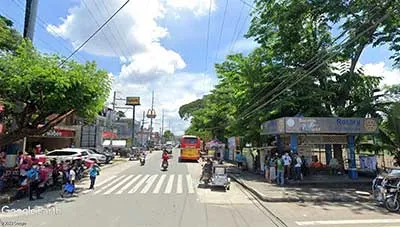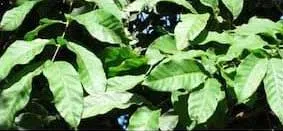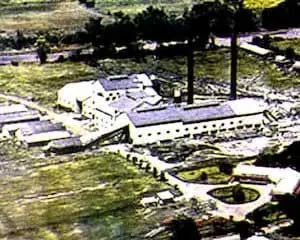Historical and Folkloric Trivia about some Barrios of Nasugbu
This article is part of a series dedicated to providing historical and folkloric information about the barrios of the cities and municipalities of Batangas. All the information has been extracted from obscure documents required of all Department of Education districts in the early fifties by then-President Elpidio Quirino to help reconstruct the nation’s history. These documents are archived at the National Library of the Philippines Digital Collections.
Not all present day barrios are included. If one barrio’s information is missing, it could be that a) this barrio was but a sitio of another barrio back in the fifties when the documents were written; b) no document about its history was submitted; or c) the document for it was badly written and contained insufficient information.
Banilad
The original families of Banilad were those of Cornelio Magsipat, Cornelio Umandal, Casimiro Bayoneto, Rosauro Butaslao and Andres Motos. During the Japanese occupation, a guerilla outfit called the Blue Eagle Command set up its headquarters in the barrio. When American forces landed on the shores of Nasugbu in January of 1945, soldiers of the Japanese Imperial Army, as they retreated, “committed atrocities and murdered the inhabitants who were found in their homes.”
Source: History and Cultural Life of Banilad
Bilaran
Barrio Bilaran was established in 1901 and its original inhabitants were the families of Nicomedez Alicaway, Juan de las Alas and Andres Romanes. It was said that the early inhabitants of the barrios had as their primary industry the slaughter of carabao and cattle for sale in nearby barrios. When business was lean, unsold meat was dried for preservation. This was supposed to be how the barrio obtained its name.
Source: History and Cultural Life of Bilaran
Bucana
This barrio used to be called Dagatan because it was close to the sea and part of it disappeared under water during high tide. The name Bucana was subsequently given by settlers, most of whom were fishermen, because “the land was bounded to the south by the outlet of the Palico River and the southern end of Nasugbu Bay to the west.” The barrio was established in the latter half of the 19th century and originally settled by the Ruizes, Destrezas, Rosaleses and Bayabordas.
Source: History and Cultural Life of Bucana
Bulihan
According to folklore, the name of the barrio was taken from the buri palm, which used to grow in abundance in the area. The leaves of this palm are used even to this day for thatching and can also be woven into baskets and other useful objects1. The original families of the barrio were those of Alejandro Baaco, Esteban de Guia, Nicolasa de Guia, Benito Limbac, Feliciano Dias, Celestina Limva, Eustaquio Lopez and Marta Novicio.
Source: History and Cultural Life of Bulihan
Bunducan
The name of this barrio was supposed to have been derived “from the hills that rose at its southern end which look like an altar, and forms the most attractive part of the village.” The barrio was supposed to have been established in the latter half of the 1890s. The original families were led by then “Capitan” Pedro Ruffy, a revolutionary officer. They had fled close to the mountains from Tuy, Balayan, Alfonso and Caylaway to avoid Spanish forces. Later would follow families from Tuy who would clear the lands: the de la Rosas, Mendozas and Casabals.
Source: History and Cultural Life of Bunducan
Calayo
The barrio’s name was supposed to have been taken from the calayo2 (or kalayo) tree that grew in abundance in the area. The barrio itself was established in 1899 but was permanently settled two years later. Its original families were those of Pio Rodriguez, Pedro Liwanag and Simplicio Sevilla. During the American colonial era, Calayo was the favorite vacation resort of the hacienderos of Looc, another of Nasugbu’s barrios. Towards the end of World War II in the Philippines when the Japanese soldiers were committing horrible atrocities, many people from Poblacion Nasugbu and the barrio of Lumbangan evacuated to Calayo.
Source: History and Cultural Life of Calayo
Catandaan
According to folklore, Catandaan was originally cleared and settled by Aetas until they fled in fear upon the arrival of the Spaniards. The barrio was supposed to have been founded as early as the 14th century, hence its name. When the barrio was subsequently resettled, the original families were the Condition, Bautista, Esteron, Guzman, Ilao, Umandal and Bongcang families. During the Philippine Revolution, men from the barrio joined General Pedro Ruffy in fighting the Spaniards. Among these were Mariano Bacit, Daniel Esteron, Juan Batang and Venancio Pedraza.
Source: History and Cultural Life of Catandaan
Caylaway (Kaylaway)
Caylaway or Kaylaway, as it is contemporarily spelled, was established in 1886. It used to be known as Gulod and was first settled by the Caisip family. The barrio was supposed to have once been part of the town of Alfonso in Cavite. Eventually, it would become an hacienda of the Roxas brothers. During World War II, seven inhabitants of the barrio were killed by Japanese soldiers: Jose Rustia, Felipe Oliva, Galacio Cuyo, Antonio Alix, Antonio Zabarte and Marcelo Sobreviñas. One Dado Dastreza organized a guerilla unit in the barrio but were killed by fellow Filipinos “due to rivalry of power.”
Source: History of Caylaway Proper
Dayap
As one might have guessed, this barrio was named after the dayap, a Philippine lime, which used to grow in abundance in the area. The barrio was established in 1901 and the original settlers were led by one Islao Enguanzo. In 1943, during the Japanese occupation when wealthy merchants had sought refuge in Dayap, the barrio was attacked by a group of outlaws under a “Moro” leader. The invaders were repulsed after a firefight by locals, led by one Ariston Ularte. They killed three of the intruders, including their leader. The outlaws never returned.
Source: History and Cultural Life of Dayap
Latag
This barrio’s name is said to have been taken from its topography, which was basically level plains. Latag was said to have been established “during the latter part of the Spanish regime.” The Papa and Salas families from Poblacion Nasugbu were said to have been the barrio’s original settlers. There were no reported atrocities committed by the Japanese during World War II, but the barrio instead suffered from raids of the tulisanes, groups of outlaws many of which were encamped in the mountains of Cavite.
Source: History and Cultural Life of Latag
Looc
According to folklore, Looc used to be called Kawiliwili (in English, enjoyable). Supposedly, this was because people, during the Spanish era, who came to visit loved the place so much that they opted to stay. Surrounded by mountains as it was, settlers thought that the sky seemed narrow and compared it to a bag. This was supposedly how the barrio got its name3. [See notes and references.] The barrio’s original families were those of Felix Malfora, Manuel Encarnacion, Antonio Villafranca, Regino Liwanag, Telesforo Magambol, Moises Isla, Esteban Aguilar, Alejandro Liwanag, Castor Castillo and Catalino Biniang.
Source: History and Cultural Life of Looc
Lumbangan
According to folklore, barrio Lumbangan obtained its name from the lumbang or candlenut tree which grew in abundance in the area. The barrio would often be loosely referred to as Central because of the presence of the Central Azucarera (Sugar Central) Don Pedro. Its original families were said to be the Barcelons and the Atienzas. During the milling season, it was said that Lumbangan’s population would become temporarily inflated as many workers were brought in, some from as far as Pangasinan. These Pangasinenses would occupy one corner of the barrio that came to be called “Pangasinan” after the workers’ home province.
Source: History and Cultural Life of Lumbangan
Malapad-na-Bato
This barrio is supposed to be so named because of the wide flat stones found in the vicinity. The barrio itself was originally just a sitio during the Spanish era but formally became a barrio in April of 1952. Its original settlers were the de la Vega and Bayaborda families. An encounter between Filipino revolutionaries and Spanish forces was supposed to have taken place in this barrio near the end of the Spanish colonial era.
Source: History and Cultural Life of Malapad-na-Bato
Maugat
According to folklore, this barrio’s name was given because of the presence of a large balete tree, which people referred to as “kahoy na maugat” (the tree with many roots). The barrio was said to be an encomienda of Don Antonio Roxas, who placed the area under the administration of one Marcelo Tiangco, commonly known at the time as “Kapitan Marcelo.” The latter encouraged people from the town of Nasugbu to come to the place to clear and plant the land. The original families who heeded his call were those of Anastacio Villafranca, Juan Ularte, Segundo Bengcang and Maximo Caraig.
Source: History and Cultural Life of Maugat
Munting Indang
It was said that Munting Indang used to be a forested area until it was cleared by settlers during the Spanish colonial era. According to folklore, a wealthy man from the town of Indang in Cavite bought the barrio from locals at the price of only two pieces of gold. The new owner supposedly gave the name “Munting Indang,” meaning that it was a smaller version of his hometown. The first families to settle the barrio were those of Melecio Bayoneto, Gaspar Bayoneto and Juan Cortal. They would be followed by the families of Silvestre de Torres, Catalino de Jesus, Eustaquio Ilao and Segundo Pasiona.
Source: History and Cultural Life of Munting Indang
Pantalan
This barrio used to be called Embarcadero, meaning for pier in Spanish; and this barrio was where ships docked. Pantalan is just the Tagalog version of the same thing. The barrio’s original settlers were the families of Domingo Barcelon, Victorino Zafra, Imoy Sambat, Prudencio Villaluna and Gaspar Villafania. In the old days, inhabitants of the barrio either farmed or fished. Over time, the river became shallow until it could no longer accommodate ships.
Source: History and Cultural Life of Pantalan
Reparo
The small barrio of Reparo was supposed to have been so name since the time of the Spanish era. In the old days, outlaws called the “mangloloob” (probably tulisanes) used this barrio as a meeting place before and after raiding other barrios. After such raids, the outlaws would meet there again to “reparohin ang mga nangyari, ang mga nakuhang salapi…” (From context, to “review4” [See notes and references] events and count the money…) During the Philippine Revolution, Reparo was also one of the meeting places of the Katipuneros.
Source: History and Cultural Life of Reparo
Tumalim
According to folklore, this barrio’s name was taken from a tree which used to grow in abundance in the area: a “robust and high climbing rattan5” with the scientific name calamus mindorensis, known in Tagalog as tumalim and in Bicolano as tumaram. Tumalim was first established in 1886. The barrio’s pioneers were the families of Roman Rodriguez and Juan Mendoza. Soon after its establishment, the barrio’s economy would be ravaged by the arrival of swarms of locust as well as the coming of the cattle plague called rinderpest.
Source: History and Cultural Life of Tumalim
Utod
The year of Utod’s establishment was placed at 1901. The barrio was, at first, a forested area, until it was cleared by kaingin. Its name was supposed to have been a corruption of the Tagalog word “tuod,” meaning the dead trunk of a tree. Presumably, there were many such deadwood left behind after clearing of the forest by kaingin.
Source: History and Cultural Life of Utod
2 The calayo or kalayo is a shrub or small tree considered as medicinal. “Kalayo,” online at the Philippine Medicinal Plants.
3 In Tagalog, lo-ok means a gulf or bay. Could it be that Looc overlooked the bay?
4 In Spanish, reparo is actually “repair.”
5 “Calamus mindorensis,” online at Plant Use.





